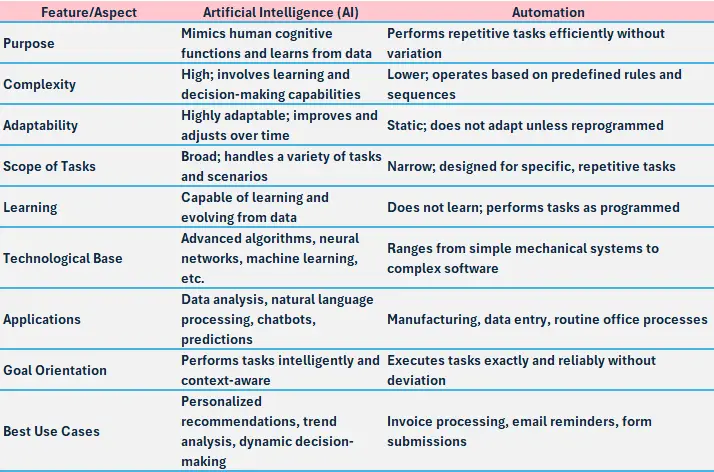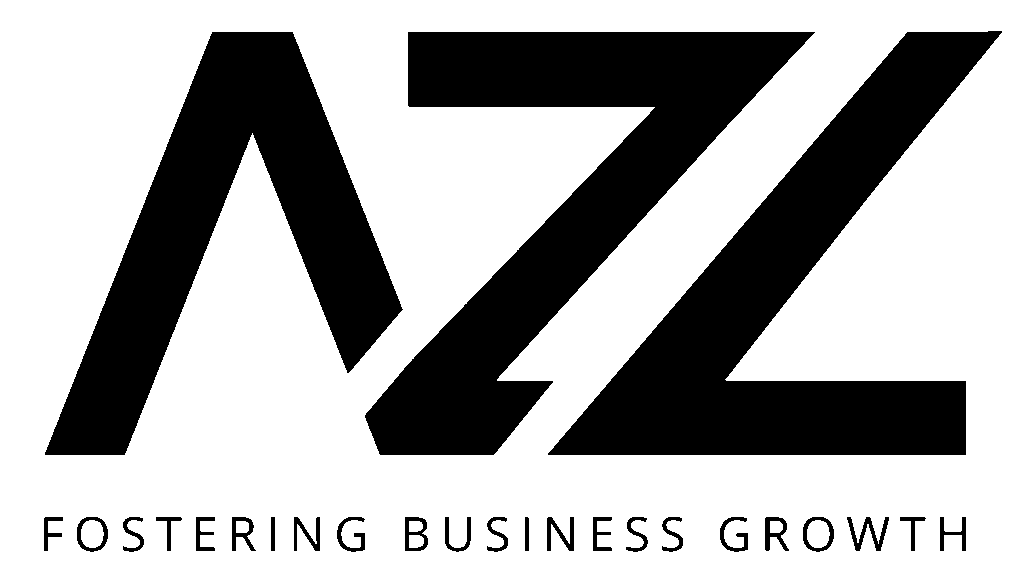Modern businesses often conflate artificial intelligence (AI) and automation, yet each technology has unique strengths. Understanding these differences is essential for choosing the right tools to streamline operations, enhance customer experiences, and fuel growth.
What Is Automation?
Automation refers to using technology to perform repetitive, rules-based tasks with minimal human intervention. These systems follow predefined instructions—think of them as digital checklists that ensure consistency and efficiency.
Common Automation Examples:
- Automatically processing invoices
- Sending routine email reminders
- Handling simple form submissions
Key Benefits:
- Increased productivity by reducing manual labor
- Improved accuracy for repetitive tasks
- Lower operational costs
Automation excels in scenarios where tasks do not change frequently and require consistency, not judgment or adaptation.
What Is AI?
Artificial intelligence goes beyond automation by mimicking human-like reasoning and learning from data. AI systems adapt to new information, recognize patterns, and make decisions—often in ways not explicitly programmed by humans.
Common AI Examples:
- Personalized product or service recommendations
- Chatbots that interpret and respond to complex customer queries
- Predictive analytics for business trends
Key Benefits:
- Dynamic adaptation to new data and scenarios
- Enhanced decision-making and personalized experiences
- Ability to handle tasks requiring judgment or learning
AI is ideal for environments where flexibility, continuous improvement, and intelligent decision-making are crucial.
When to Choose Automation
Use automation for high-volume, repetitive tasks where rules are clear and consistency is paramount:
- Standardized email follow-ups
- Data transfers between software systems
- Triggered marketing communications
Automation is best when you need reliability, speed, and minimal oversight.
When to Use AI
Opt for AI when tasks require adaptation, personalization, or decision-making:
- Chatbots that manage diverse customer queries
- Analyzing customer behavior trends for marketing
- Automating content suggestions or campaign optimization
AI shines where ongoing learning, complex reasoning, or pattern recognition are needed.
Combining Automation and AI: Intelligent Automation
The most powerful results often come from combining both technologies—a practice known as intelligent automation or hyperautomation. Here’s how it works:
- Automation gathers and processes data (e.g., collecting customer contact info)
- AI analyzes that data, crafts personalized responses, or predicts outcomes
- Automation then continues the workflow based on AI’s insights.
This synergy enables businesses to automate complex processes that require both speed and intelligence, such as personalized marketing campaigns or advanced customer support.
Making It Work for Your Business
To effectively leverage automation and AI:
- Audit workflows: Identify repetitive tasks and decision point.
- Define goals: Clarify what you want to achieve (e.g., efficiency, customer satisfaction)
- Choose tools: Use Robotic Process Automation (RPA) for rules-based tasks; AI platforms for adaptive operations
- Start small, scale smart: Pilot a few workflows, measure results, and expand gradually.
- Train your team: Ensure staff understand and trust the new tools
- Measure and improve: Continuously monitor outcomes and refine systems
Practical Use Cases for Small and Mid-Size Businesses
- Customer Service: Automate ticket routing, then layer on AI-powered chatbots for 24/7 support
- Marketing: Automate email sequences, then use AI to optimize subject lines and timing
- Sales: Automate lead capture and follow-ups, then add AI for lead scoring and personalized outreach
This layered approach saves time, improves quality, and prepares your business for future challenges.
“Automation is about setting up robots to follow a set of pre-defined rules. AI is about setting up robots to make their own decisions.”
Ready to Get Started?
If you’re considering integrating automation or AI into your business, start by assessing your current workflows and identifying opportunities for improvement. Combining both technologies can help you enhance operations, reduce costs, and drive smarter growth.
For expert guidance tailored to small businesses, AZL Marketing can help craft a strategy that fits your goals and resources.
Summary Table: AI vs. Automation

Leverage the right combination of automation and AI to future-proof your business and unlock new levels of efficiency and innovation.



